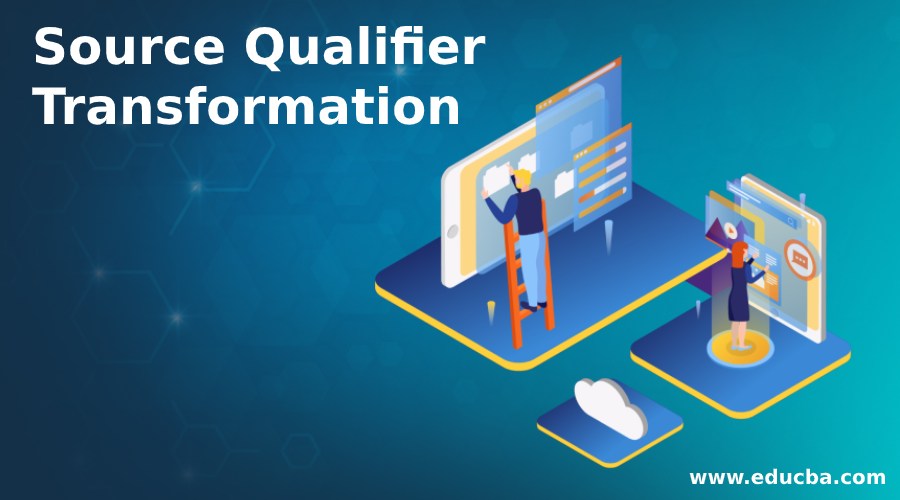Updated July 4, 2023
Introduction to Source Qualifier Transformation
The Source Qualifier transformation in Informatica is responsible for representing rows and providing connected information that can be read by integration services. When a mapping includes both a relational source and a flat file, the Source Qualifier transformation is necessary to provide the required support. By using the Source Qualifier transformation, it becomes possible to override or define the data to be processed from the source.
Properties of Source Qualifier Transformation
The connected active is used to define the rows which read the integration services when the session is executed. The user needs to mandatory connect to the mapping of flat files or relational files. It transforms the source data types to data types fed to Informatica.
- Sort the input – the user can enter the specific number to sort the ports which fetch only the required data. The default SQL integrates the service by feeding an ORDER BY command.
- Filtering of rows – the user can select the required rows from the database by adding a WHERE phrases along with the default query
- Customization of SQL – the user can execute his SQL queries to perform their calculations.
Manual Creation of Source Qualifier Transformation
Simple methods with distinct properties create it. The easy way to create this is by dragging the definition of source data into mapping columns. after this, it automatically creates the source qualifier transformation. For the manual creation of source qualifier transformation, the following steps should be executed.
- To create a new one, click on transformation, then choose carrier.
- Then tap on the source qualifier transformation’
- Then mention any name for the source qualifier transformation
- Finally, choose to create to deploy it manually.
- Complete the task by choosing OK and then finish it by Done.
The configuration of the following can be done in the concerned tab. To move to the properties tab, then double-tap on the properties button to customize it according to the requirement.
- If it should be specified, then it should be a customized query that can be replaced with the default query.
- The User-Defined Join condition carries out the execution of merging multiple sources.
- The level of detail included in sessions during execution, including transformation details, can be controlled using the TRACING LEVEL.
- To choose the particular rows, it can use SELECT DISTINCT from the sources
- The pre-session of SQL phrases to execute against the database prior to the integrated services that read the data from the source by using options Pre-SQL
- The post-session of SQL clauses to execute against the database once the integration services once it writes the target.
- There are dual options, such s output, that can be repeatable or deterministic. The source output has a specific order which is fluctuating between the executed session.
The data can be transformed from one data type to another by the following methods. It can use arithmetic operators or functions belonging to the transformation process.
Advantages and Disadvantages of Source Qualifier Transformation
The queries can be overridden to make themselves occupy the index and get an optimized execution plan which also involves the hints of SQL query. The advanced features of SQL, such as Pivot and Common Table Expressions (CTEs), actively enable users to obtain specific details in queries and compute complex logic. The basic rules to execute ETL packages should be simple. It loses the capacity to make optimization of push-down areas.
Conclusion
The source qualifier transformation chooses the records from a variety of sources which can be relational tables, flat files, power exchanging services, and Informatica services. It offers an effective method to sort the input fields to make the joins and swaps. It is necessary for flat files and relational table sources. It is a transformation of input ports to output reports by giving suitable specifications. It executes SQL queries for relational databases and runs any merges between the relational databases on a similar database.
Recommended Articles
This is a guide to Source Qualifier Transformation. Here we discuss an introduction its properties, manual creation, advantages, and disadvantages. You can also go through our other related articles to learn more –



